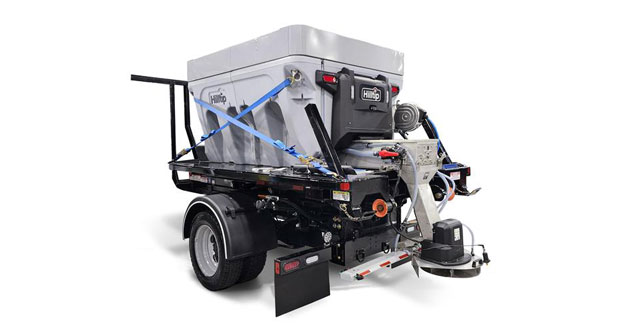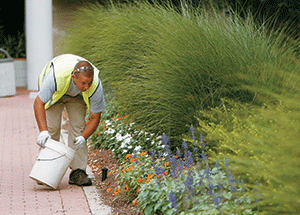
Snowplows sat idle, gathering dust instead of snow. Temperatures blinked to late spring levels in February before alternating between record heat and below freezing for much of the country. It sent contractors everywhere scrambling and launched their 100 Days of Hell as much as 45 days earlier than in years past.
“Everyone is scrambling to find out what it means for bugs and weeds because it’s uncharted territory,” says Phil Fogarty, owner of several Weed Man franchises in northeast Ohio. “We’ve never had this combination of things happen, let alone any one of them.”
While so much of what Green Industry professionals do is dictated by the weather, preparing and planning for the season takes place around the calendar. And while Mother Nature rarely abides by exact dates on the calendar, she doesn’t usually vary her schedule by so wide a margin as she did this year. It’s forced maintenance teams out well ahead of schedule and wreaked havoc on lawncare programs.
“As you look at how people make their applications, those who were in a routine of looking at a calendar and thinking, ‘This is the time that it goes,’ better adapt this year,” says Kevin Frank, associate professor and extension turf specialist at Michigan State University. “It’s obviously not the case so far.”
“It’s craziness,” says Frank, who in late March had just returned from an overseas teaching assignment. “I don’t know how to describe it. Usually I go to China this time of year because I figure by the time I get back the season will just be starting.”
Instead, he was about a month late. Not dealing with a typical year is, well, typical. Rarely does the average season materialize. Average is just the balance between the highs and lows of extremes. An average season, if such a beast exists, certainly hasn’t appeared in any widespread form in the past few years.
“Two years ago, we had snow cover the entire month of March,” Fogarty says. “We didn’t make our first applications until March 31st or April 1st or 2nd. You couldn’t see lawns from Thanksgiving until April Fool’s day. Here we have the opposite of that. After two really, really bad winters, we’ve got a year where we’ve had almost no winter.
“Last year we had the wettest year ever; then we had the mildest winter on record. Then we have a spring that starts off with four or five record temperatures in a row.”
Such unusual weather has implications for a variety of services.
“You get used to when a pest or when a disease is going to show up,” says Jim Zwack, director of technical services for the Davey Institute. “If everything is running three, four or five weeks ahead, it becomes a little more of a wild card.
You’ve got to juggle your lineup because you’re not used to dealing with this problem or that problem at that time of year. You can’t rely on the way you’ve always done it. In a year like this, that might not be good enough.”
Maintenance
Besides losing revenue from the highest margin service he offers (snow plowing), the unusual weather forced Roscoe Klausing, owner of Lexington, KY-based Klausing Group, to adjust his maintenance plans.
“It’s been a killer,” says Klausing. “You’ve got a block of hours that has to be performed in the month of March — that’s mulching. In April you’ve got a big block of hours and that’s mowing. As soon as people start calling and saying, the grass has to be cut right now, you’re stealing from that (first) block. It’s been really, really challenging.”
Challenges are part of life in the Green Industry. And like many other difficult situations, the key is good communication with clients.
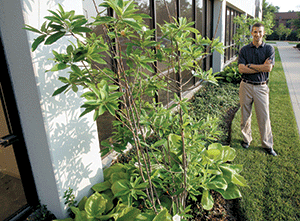
“As much as is possible, we’re trying to educate people,” Klausing says. “That’s the best tool that we’ve got. You can’t talk to customers in terms of weed and feed. They have to understand what we do, even if you have a good lawn care in place, there are variances within every season. There has to be some level of tolerance on their part.”
Tolerance and accommodation. Klausing is working with his customers to provide the level of service his customers demand without losing the profit he needs.
“By far, 98% of our customers have fixed-priced contracts,” Klausing says. “You can’t start mowing three weeks early and still be expected to adhere to a weekly visit that was sold to start April 1 and end the last week of October.
“We make clear that we are not going to exceed the number of occurrences in the contract. That may mean we go 10-14 days between visits in the heat of the summer. We can adhere to your budgets, but quality and service could be impacted by a change in the weather.”
Most people understand the situation, and about 15% have already purchased a few additional mowings, Klausing says. The rest have opted to see how the summer goes, and if there’s a need, purchase those extra mowings later in the season.
100 Days of Hell
Memorial Day might mark the traditional start of summer, but it’s April Fool’s Day that traditionally begins contractors’ busy season. February and March are normally spent planning. For many, those months were spent in the field.
“Those guys have been cranked for the last few weeks,” says Derek Miller, southern regional sales manager for BASF.
Areas that traditionally are covered in snow through the winter months not only spent much of the season bare, they were far warmer than normal.
“There was no winter,” Frank says. “We never had frost under turf this year. There was never frozen soil up here all winter, which is pretty remarkable. Then you get off to the fast start that we got off to with spring; it’s going to be interesting.”
Interesting, challenging and unexpected. And that’s not just for contractors. Chemical manufacturers are having their own issues.
“When you forecast something for April, and now it’s March and your manufacturing plant is trying to do just-in-time manufacturing, it compresses that schedule,” says Adam Manwarren, Product Manager — Turf & Ornamental for FMC Professional Solutions. “We’ve had a few stock-outs, which is a good problem to have, but you never want to keep the customer waiting.”
When FMC does its forecast, management also provides a plan for a good year, which includes a 10% to 25% bump in product. FMC, anticipating the need for its post-emergent products, is acting on that higher production plan.
“I’ve seen increased demand a lot earlier than I would have ever anticipated,” Manwarren says.
Lawn care
The early warm weather forced lawn care professionals to apply their preemergents much sooner than they typically have in the past. Doing so this early in the year might require a split application. Products have an expected duration. If those products are applied 30-45 days sooner than normal, they’ll break down that much sooner. In other words, some areas might need a second round of preemergent application, and will very likely need additional post-emergent attention.
This serves as both a challenge and an opportunity for lawn care professionals. Companies that offer pre-sold programs will need to convince existing customers to pay for an extra application. It’s either that, risk the wrath of a customer unhappy with a stressed lawn, or eat the cost of product, fuel, labor, etc.
“Instead of starting a month later, we started a month earlier,” Frank says. Thus, “your program isn’t going to come out exactly the same.”
Fogarty isn’t sure if the weather is creating opportunities “but we’re on a really good pace this year, and so is most every operation I talk to in our group,” he says. “They’re way ahead of last year’s sales. We’ve done a lot of marketing things to push that along. And the economy seems to be getting better. I don’t know what combination of factors is making it happen, but we’re way ahead of pace.
“It’s been easier to get people to get into a conversation about their lawns when it’s not covered in snow and they can start to see weeds and growth.”
But the weather is creating some challenges.
“From an economic perspective, the lawn care operators should be in a position to capitalize on it — as long as they have the manpower ready to go,” Manwarren says.
And Fogarty’s addressing that.
“You plan to start around a calendar date,” Fogarty says. “You can’t plan to start whenever the weather breaks. We’ve got to bring people on, hire them, get them trained and have trucks ready. Even though the weather was ready for us to make treatments from late February on, we don’t have our plans in place to start until we get close to the second week of March.”
Small (one or two-man) operations might be able to respond to the weather more than the bigger players. “When you’re running a business that’s got multiple people involved, you have to plan around a ‘normal’ year,” Fogarty says.
Disease and pests
“If the pattern of running things ahead of schedule continues, we can expect to see pests showing up, disease show up ahead of schedule,” Zwack says. “Dutch Elm Disease (could appear) in late May or early June. We may have more visibility of those problems.”
Klausing looks at a degree-days calendar to plan for pest outbreaks.
“We’re adding up the sum of all the temperatures every day,” he says. “This is how you get an indication of when pests are going to become active…. We can take a look at our delivery schedule and we can get an indication of what services are also going to come early.”
“We accumulated as many growing-degree days in late March as we had in late April or early May last year. It gives you a sense of how far ahead we are. It throws the timing off when it comes to management of those problems.”
Return to winter
Despite the early warm weather across most of the country, a late April East Coast storm proved that weather is evermore unpredictable.
“When we have unusually persistently warmer than normal weather early in the year, you start to get trees and shrubs breaking buds and put out leaves much earlier in the calendar than they normally would,” Zwack says. “When you combine the weight of those new leaves plus the weight of the heavy wet snow, we see more damage from those scenarios.
“Trees are just not used to that extra load. In summertime (with a big wind event), those trees act like a sail with all those leaves on there. If you start to add dead weight, sitting on those branches, on top of the weight of the leaves, it becomes an issue of biomechanics. It’s a recipe for failure.”
Failure for trees, but it could give a lot of businesses that lost revenue during the winter a boost because there was no snow to remove.
“When there’s damage like that, the services that are provided by tree care companies are in high demand,” Zwack says. “Storm damage is hard work and it’s dangerous. On the upside for business, (companies) are going to have people busy for weeks or months.”
Klausing’s Kentucky-based team has been evaluating how current conditions will affect future business.
“If turf comes three weeks early, you can bet shrubs will,” Klausing says. “While we might typically start shrub pruning, sometime in May, we anticipate that is going to happen toward the end of April or early May. We’re going to start getting calls.”
And there might be some surprises yet to come.
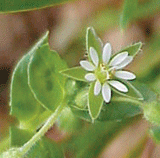
“I don’t know if it means we’re going to have a huge crab grass year,” says Fogarty. “We’ve gotten to the point where the soil temperatures are well ahead of where they need to be, for crabgrass to germinate, but we haven’t seen crabgrass.
There must be some other factor at play.”
Whatever factors are at work, the early start to the season is keeping contractors on their toes.
“The business end of this becomes challenging,” Zwack says. “Buying products and getting your materials in, all that stuff sort of hits you. It’s not like at any given moment you knew this pattern was going to continue. You stay alert; you stay attentive.”
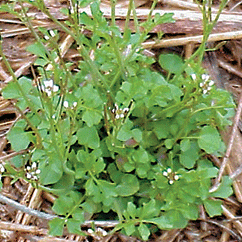
The unlucky 7
Unusual weather means unusual things happening, or at least happening at unusual times. Kathie Kalmowitz, Ph.D., technical specialist – South, BASF Professional Turf & Ornamentals, provides a list of weeds that many lawn care professionals are seeing this spring and summer.
Troublesome 2012
Weeds (South):
1. Bluegrass
2. Crabgrass
3. Poa annua
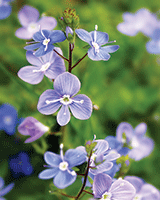
4. Chickweed (prolific seeder)
5. Hairy bittercress (prolific seeder)
6. Lawn burweed
7. Speedwell, also called veronica
Photos: The Klausing Group, Virginia Tech Weed ID Guide
